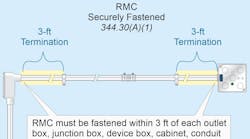Q. We do a lot of generators for residences, and only recently have been getting written up on our transfer switches. The inspectors are saying that if I use the transfer switch to transfer the entire house — and I put it between the meter and the service disconnect — then the transfer switch must be "service rated." Can you help me understand the rules, please?
A. There are a couple of rules that have to be followed that ultimately get you to what your inspector is saying. In general, electrical equipment must not be connected to the supply side of the service disconnect enclosure, which means that transfer equipment can’t be on the supply side of the service disconnect [230.82.]. Therefore, you must make your transfer switch your service disconnect. In order to do that, it must be listed as "suitable for use as service equipment" [230.66].



